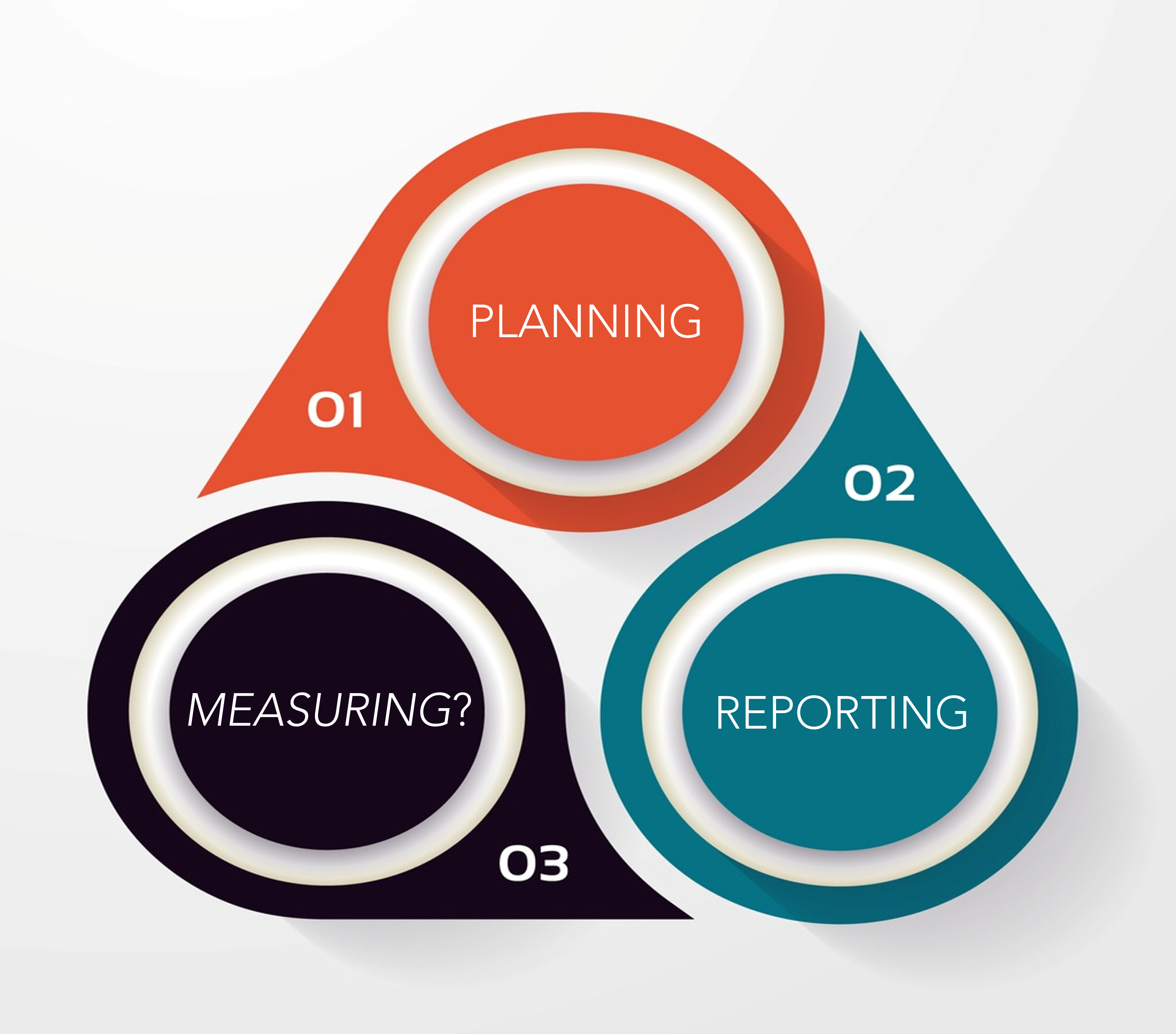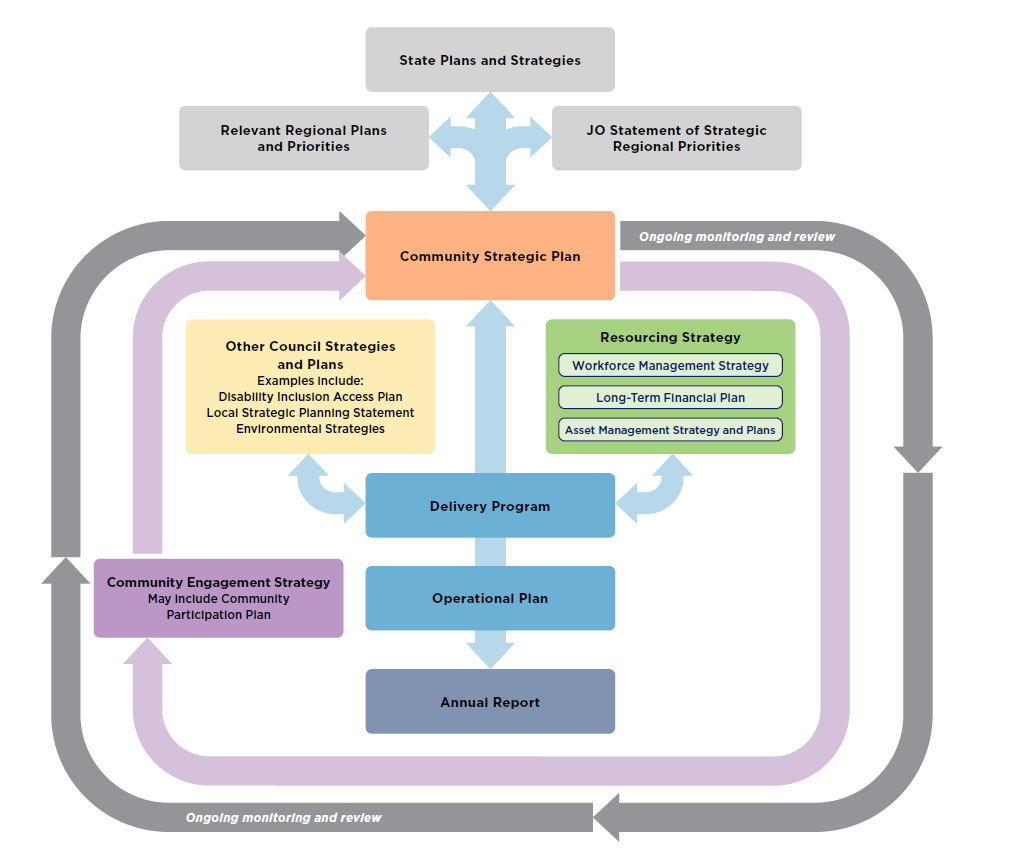How to Align Measurement to Your Planning & Reporting Framework
by Stacey BarrMany local governments have integrated planning and reporting frameworks, but how good are they at fitting performance measurement in where it’s needed?

Local governments (such as city councils, regional councils, counties and shires) are often guided in their planning and reporting by the next level up of government (such as state or province). This guidance usually starts with a framework for integrated planning and reporting, like these:
- The Office of Local Government in New South Wales offers the IP&R Framework
- Western Australia Department of Local Government, Sport and Cultural Industries Integrated Planning and Reporting Framework
- Engage Victoria’s Integrated Strategic Planning and Reporting Framework (ISPRF)
I’ve seen, first-hand and on dozens of occasions, just how complex and messy strategic and operational planning can be in local government. If your organisation is as complex as most local government organisations, you’ll understand just how hard it can be to prioritise improvement and report on what matters.
In complex organisations, planning is complex.
Local government is complex because there are many diverse stakeholders, many diverse community needs, and many services and programs that comprise daily operations. Throw in some community-level politics, and you quickly see how planning and reporting has to serve too many masters.
Complex organisations, like local government, get lost in the weeds without a framework to organise this complexity. But like many planning frameworks, the role of performance measurement is often left out at worst, or loosely mentioned at best.
For example, in NSW’s IP&R Guidelines (see page 10) the principles for integrated planning and reporting don’t even mention the word ‘measurement’:
(a) Councils should identify and prioritise key local community needs and aspirations and consider regional priorities.
(b) Councils should identify strategic goals to meet those needs and aspirations.
(c) Councils should develop activities, and prioritise actions, to work towards the strategic goals.
(d) Councils should ensure that the strategic goals and activities to work towards them may be achieved within council resources.
(e) Councils should regularly review and evaluate progress towards achieving strategic goals.
(f) Councils should maintain an integrated approach to planning, delivering, monitoring and reporting on strategic goals.
(g) Councils should collaborate with others to maximise achievement of strategic goals.
(h) Councils should manage risks to the local community or area or to the council effectively and proactively.
(i) Councils should make appropriate evidence-based adaptations to meet changing needs and circumstances.
— NSW’s IP&R Guidelines (page 10)
Where is good performance measurement supposed to fit?
The fundamental purpose of integrated planning and reporting frameworks
Any framework that aims to get more integration between planning and reporting is really trying to tighten the alignment between what an organisation says it’s going to achieve and what the organisation does to achieve that.
“Integrated planning and reporting gives local governments a framework for establishing local priorities and to link this information to operational functions.”
—
Western Australia Department of Local Government, Sport and Cultural Industries
These frameworks focus on specific elements of the planning and reporting cycles, such as the community strategic plan, community engagement strategy, resourcing strategy, delivery program, operational plan, and annual report.
We all know that performance measurement is fundamental to achieving strategic and operational goals. So, why is there no obvious element associated with performance measurement in these integrated planning and reporting frameworks?
Where does performance measurement fit with integrated planning and reporting?
The clue that performance measurement does, in fact, fit in any kind of planning and reporting framework is not the boxes on the framework diagram. It’s links between the boxes, that refer to monitoring and review. Like the grey link around the outside of NSW’s
Integrated Planning and Reporting Framework:
The grey link is a feedback loop, referred to as “ongoing monitoring and review”. But for there to be real, functioning feedback loops, there needs to be real measures that monitor the results or impact of these plans. And these real measures need to be the inputs into any reports used as part of the framework.
The measures are not developed within the loops. They are developed within the boxes on such frameworks.
How to align a measurement process to your planning and reporting framework
Performance measures are quantifications that provide us with objective evidence of the degree to which our performance results (goals) are occurring over time.
In an integrated planning and reporting framework, those performance results live inside boxes like ‘strategic plan’ or ‘operational plan’ or any other box which requires us to articulate goals. For example, in the framework above, goals might be articulated in these boxes:
- ‘Community Strategic Plan’ – definitely, as there should be strategic goals developed here
- ‘Community Engagement Strategy’ – if there are specific goals for improving aspects of how engaged the community is
- ‘Delivery Program’ and ‘Operational Plan’ – if there are specific service standards to meet, or if goals are needed to align to achievement of strategic goals
A performance measurement process, like PuMP, dovetails into these boxes, somewhat in the background. It gives another layer of detail, of structure, for how to develop performance measures for the goals, as the goals are designed.
To measure performance in alignment with your planning and reporting framework, first find where the goals are created in that framework, and then point your measurement process at those. [tweet this]
Connect with Stacey
Haven’t found what you’re looking for? Want more information? Fill out the form below and I’ll get in touch with you as soon as possible.
167 Eagle Street,
Brisbane Qld 4000,
Australia
ACN: 129953635
Director: Stacey Barr





